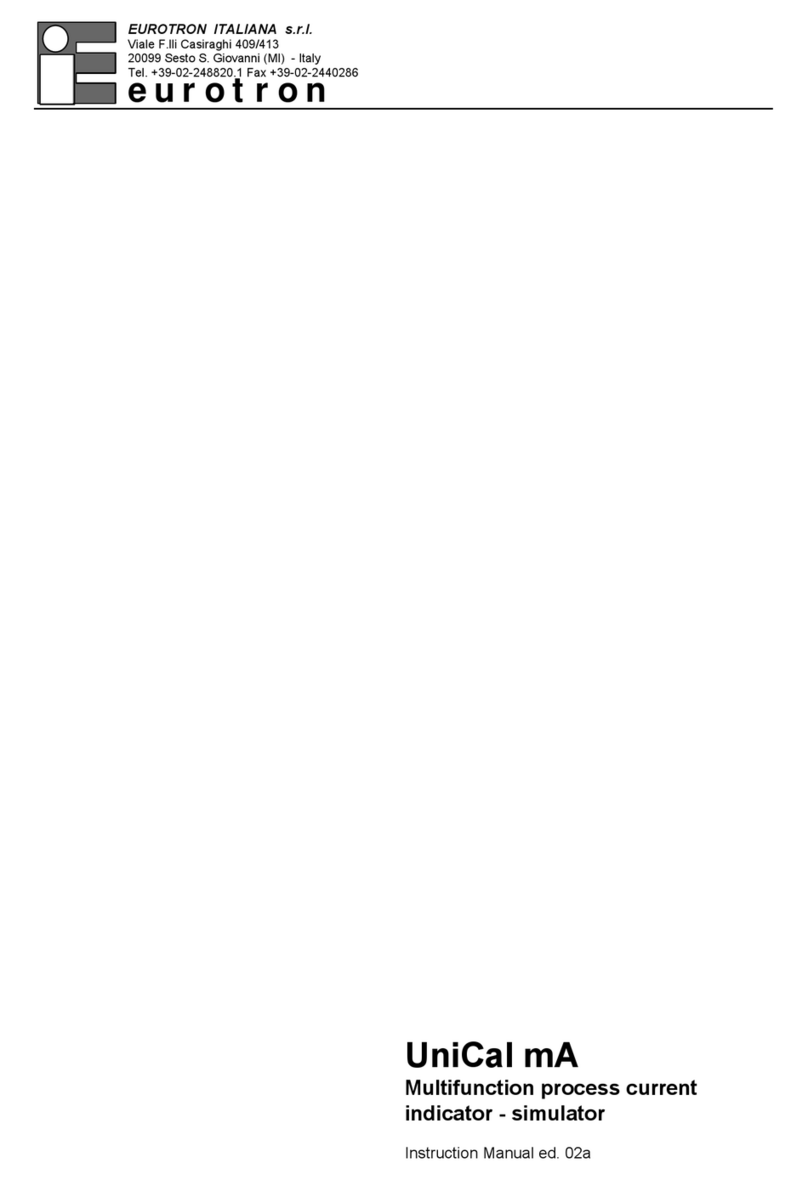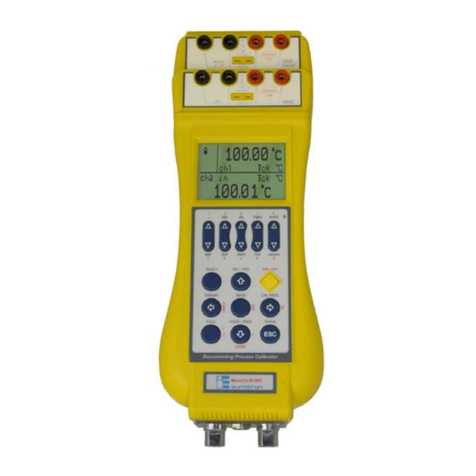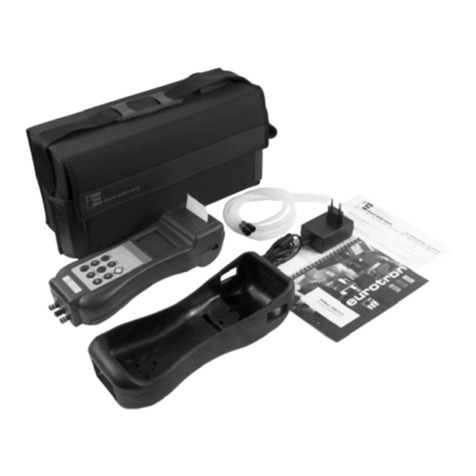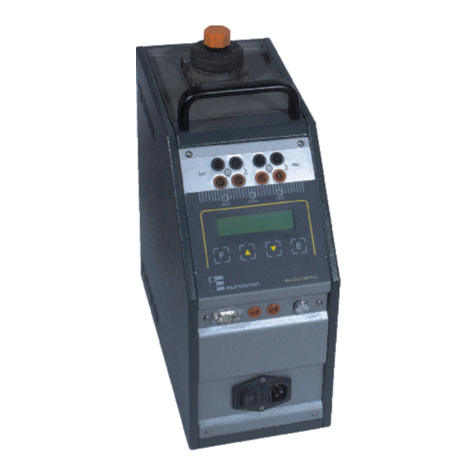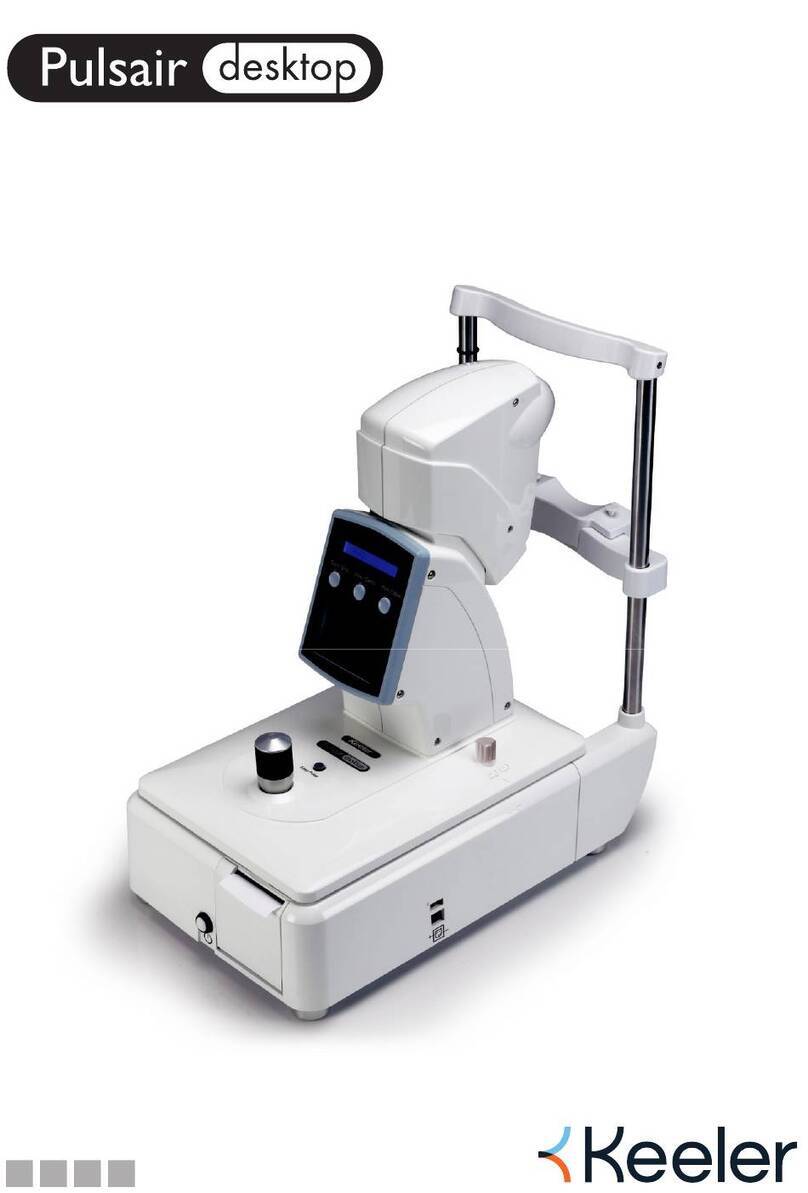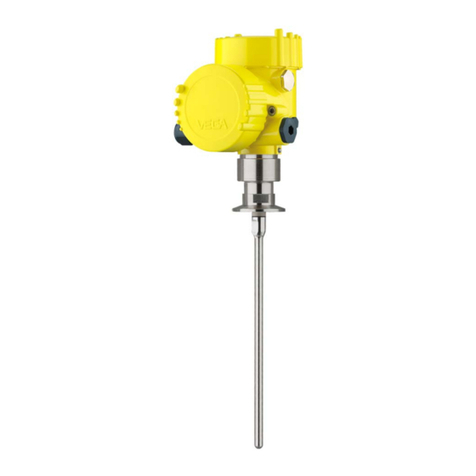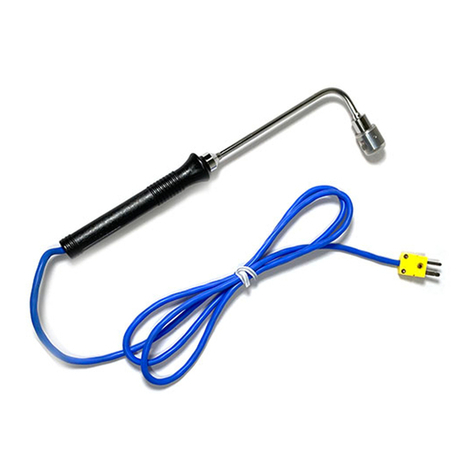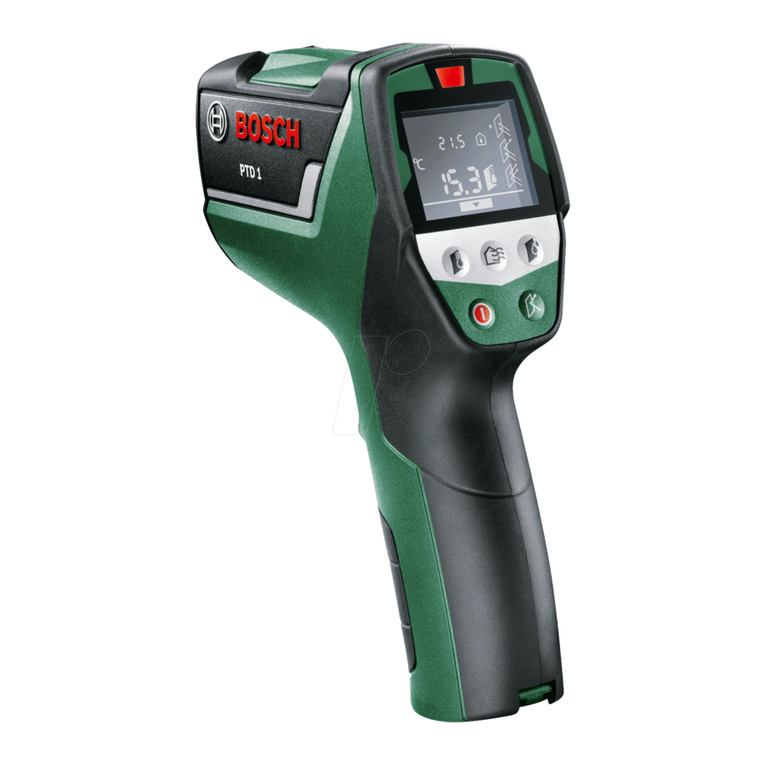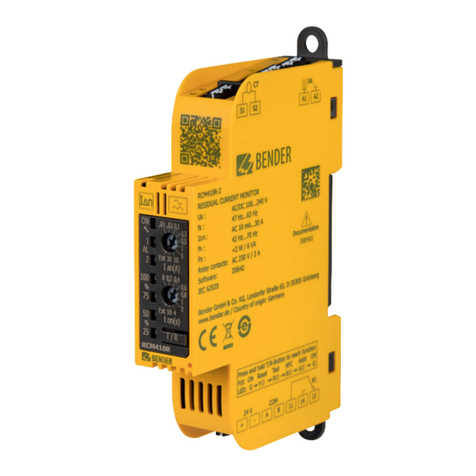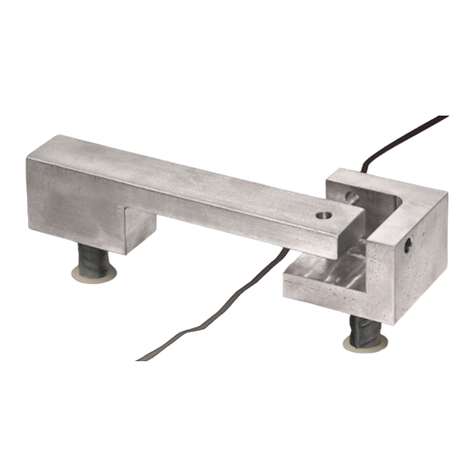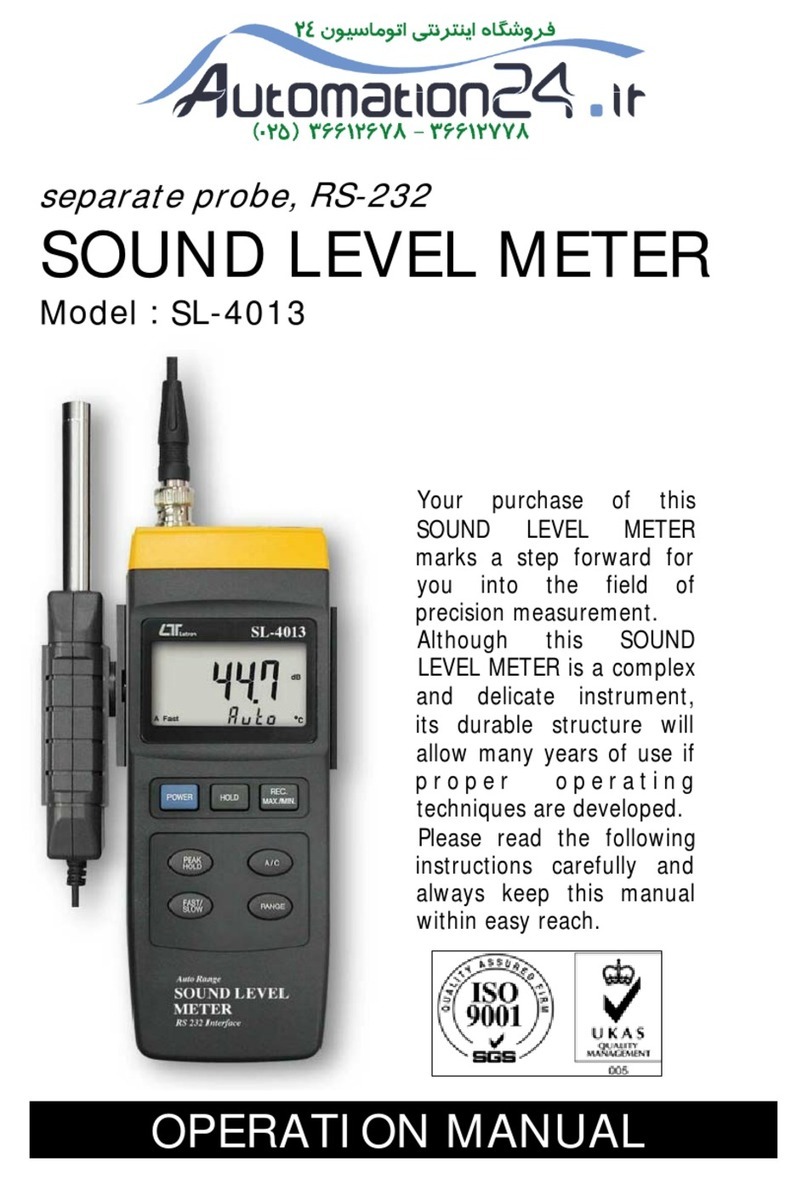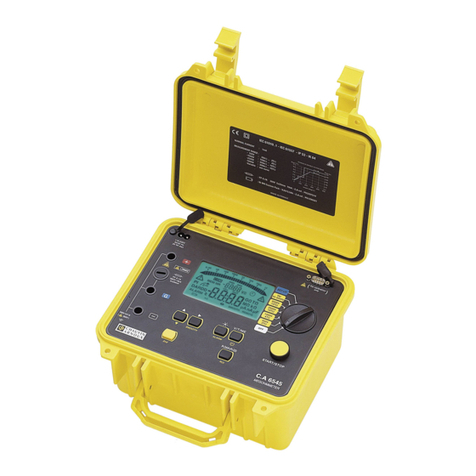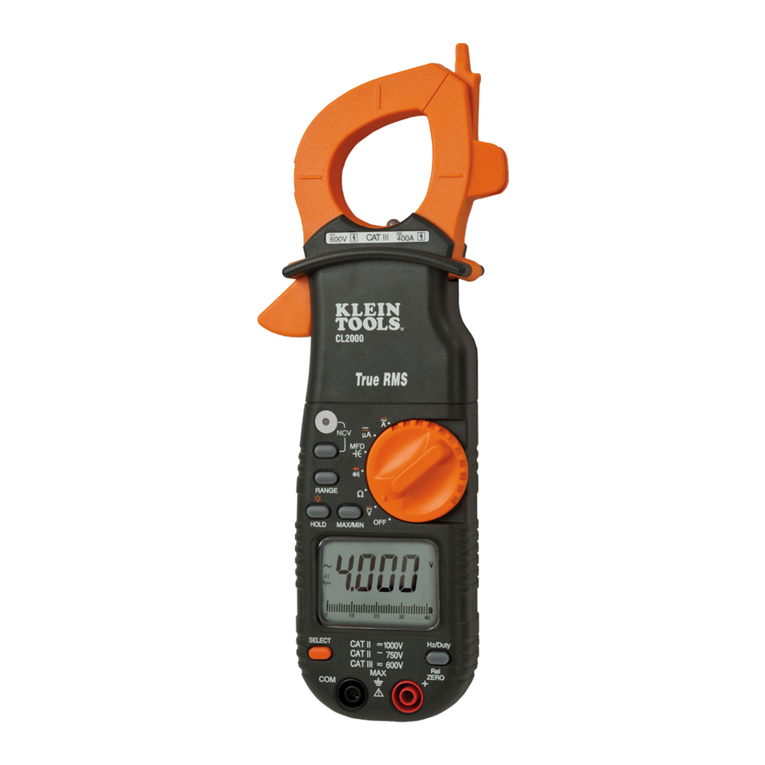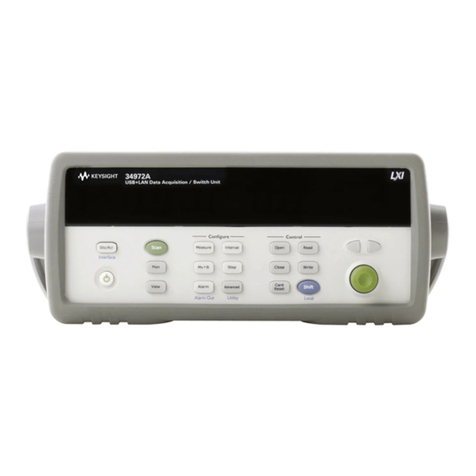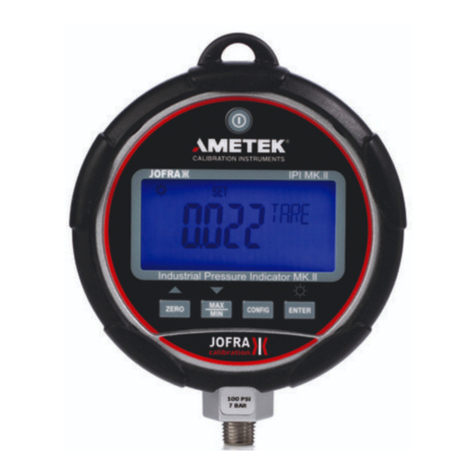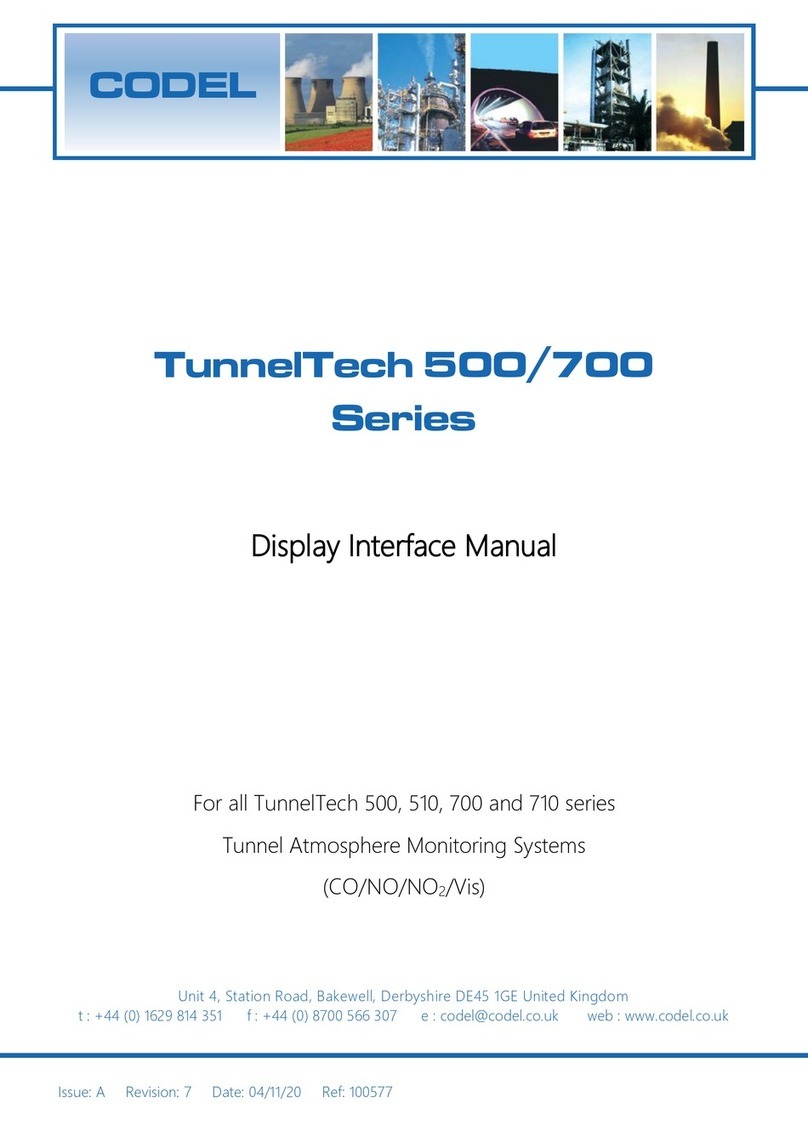Eurotron EcoLine 2000 User manual

E
Ec
co
oL
Li
in
ne
e
2
20
00
00
0
G
Gr
re
ee
en
nL
Li
in
ne
e
2
20
00
00
0
U
Un
ni
iG
Ga
as
s
2
20
00
00
0+
+
Hand-held Flue Gas analyzers
Instruction Manual MM850404 ed.05

Instruction Manual MM850404 ed.05
2
INTRODUCTORY NOTE
NOTE:THIS MANUAL IS VALID FOR INSTRUMENTS WITH FIRMWARE REV.6.000 OR HIGHER
This manual has all the information you need to install, operate and maintain the flue gas analyzers Ecoline
2000, GreenLine 2000, BTU 2000+, UniGas 2000+ and its accessories.
Eurotron has used the best care and efforts in preparing this book and believes the information in this
publication are accurate. The Eurotron products are subjected to continuous improvements, in order to
pursue technological leadership; these improvements could require changes to the information of this book.
Eurotron reserves the right to change such information without notice.
The 2000 series gas analyzers uses sophisticated analogic and digital technologies. Any maintenance
operation must be carried out by qualified personnel ONLY. Eurotron supplies instructions and operative
procedures for any operation on the instrument. We recommend to contact our technicians for any support
requirements.
The instrument is supplied by a Ni-MH rechargeable battery pack or by 100, 115, 230V
±
10% 50/60Hz line
power supply using the special power supply module provided with the instrument.
The instruments are fully tested in conformity with the directive n°89/336/CEE Electromagnetic Compatibility.
Eurotron shall not be liable in any event, technical and publishing error or omissions, for any incidental and
consequential damages, in connection with, or arising out of the use of this book.
The operator must not use this equipment for any other purpose than that stated.
This document is the property of Eurotron and may not be copied or otherwise reproduced, communicated
in anyway to third parties, not stored in any Data Processing System without the express written consent of
Eurotron
All right reserved
Copyright © 2003, 2006
EUROPEAN Headquarters
Eurotron Instruments SpA
Viale F.lli Casiraghi 409/413
20099 Sesto S. Giovanni (MI)
Tel. : +39-02 24 88 201
FAX: +39-02 24 40 286
USA Headquarters
E-Instruments Group LLC
172 Middletown Blvd – Suite B201
Langhorne, PA 19047
Tel.: 215 750 1212
FAX: 215 750 1399

Instruction Manual MM850404 ed.05
3
TABLE OF CONTENTS
1GENERAL DESCRIPTION .................................................................................................................. 5
1.1 Ordering code ....................................................................................................................................................... 6
1.1.1 EcoLine 2000 ................................................................................................................................................... 6
1.1.2 GreenLine 2000 ............................................................................................................................................... 7
1.1.3 UniGas 2000+ .................................................................................................................................................. 8
1.2 Specifications........................................................................................................................................................ 9
1.3 Calibration Certificate.......................................................................................................................................... 10
1.4 Electromagnetic Compatibility............................................................................................................................. 11
2PHYSICAL DESCRIPTION................................................................................................................ 12
2.1 Keyboard ............................................................................................................................................................ 12
2.2 Display ................................................................................................................................................................ 13
3PRINCIPLE OF OPERATION ............................................................................................................ 14
3.1 Measurement Principle ....................................................................................................................................... 14
3.1.1 Gas Sampling Probe ...................................................................................................................................... 14
3.1.2 Water Trap & Line Filter ................................................................................................................................. 14
3.1.3 Gas Sensors .................................................................................................................................................. 15
3.2 Auxiliary Measurements...................................................................................................................................... 16
3.2.1 Temperature Measurements .......................................................................................................................... 16
3.2.2 Pressure and Draft ......................................................................................................................................... 16
3.2.3 Smoke Index Measurement (optional) ........................................................................................................... 16
3.2.3.1 Measuring Instruments (optional) .............................................................................................................. 16
3.2.4 Other Measurements ..................................................................................................................................... 17
4RECOMMENDATIONS ...................................................................................................................... 18
4.1 Power Supply...................................................................................................................................................... 18
5CONNECTIONS ................................................................................................................................. 19
5.1 Electro-Pneumatic Connections.......................................................................................................................... 19
6.2 Gas Probe Positioning ........................................................................................................................................ 19
6OPERATIONS .................................................................................................................................... 21
6.1 Flue Gas Analysis ............................................................................................................................................... 21
6.1.1 Switch the Instument ON ............................................................................................................................... 21
6.1.2 Flue Gas Analysis .......................................................................................................................................... 22
6.1.3 Fuel Type Set-Up ........................................................................................................................................... 23
6.1.4 Pressure/Draft Measurements ....................................................................................................................... 24
6.1.4.1 Burner Pressure Measurement ................................................................................................................. 25
6.2 Smoke Measurement.......................................................................................................................................... 26
6.2.1 Input of the Smoke Index ............................................................................................................................... 26
6.3 Analysis Data Print.............................................................................................................................................. 27
6.3.1 Built-In Printer (option) ................................................................................................................................... 27
6.3.2 External Printer .............................................................................................................................................. 28
6.3.3 Printer Setting ................................................................................................................................................ 28
6.3.4 Header Setting ............................................................................................................................................... 28
6.4 Pressure Decay Procedure (option).................................................................................................................... 30
6.4.1 Test A (1 minutes).......................................................................................................................................... 30
6.4.2 Test B (programmable) .................................................................................................................................. 31
6.4.3 Leak Constant Set-Up.................................................................................................................................... 33
6.5 Ambient CO Monitoring....................................................................................................................................... 33
6.5.1 External CO Probe (option) ............................................................................................................................ 33
6.5.2 Internal CO Sensor ........................................................................................................................................ 34
6.6 Gas Network Leak Test (option) ......................................................................................................................... 35
6.6.1 External Natural Gas Leak Probe................................................................................................................... 35
6.6.2 Internal Natural Gas Leak Sensor .................................................................................................................. 35
7MEMORY MANAGEMENT ................................................................................................................ 37
7.1 Store Data Analysis ............................................................................................................................................ 37
7.2 Delete All Data .................................................................................................................................................... 37
7.3 Recall Single Data .............................................................................................................................................. 37
7.4 Recall Average Data ........................................................................................................................................... 38
7.5 RS232 Serial Interface Set-Up............................................................................................................................ 38

Instruction Manual MM850404 ed.05
4
7.6 DBGas 2004 Software ........................................................................................................................................ 38
7.6.1 System requirements ..................................................................................................................................... 39
7.6.2 Installing the Software.................................................................................................................................... 39
7.6.3 Registering the Software................................................................................................................................ 39
7.6.4 Compatibility................................................................................................................................................... 40
8CONFIGURATION ............................................................................................................................. 41
8.1 Engineering Units................................................................................................................................................ 41
8.2 Alarms................................................................................................................................................................. 42
8.3 Measure related to Oxygen percentage.............................................................................................................. 43
8.4 Clock set-up........................................................................................................................................................ 44
8.6 Configuration Software ....................................................................................................................................... 45
8.6.1 GasConfig Installation .................................................................................................................................... 45
8.6.2 How operate using GasConfig ....................................................................................................................... 45
9MAINTENANCE ................................................................................................................................. 48
9.1 Printer Maintenance............................................................................................................................................ 48
9.2 Firmware Upgrade .............................................................................................................................................. 48
9.3 Smoke Pump Maintenance ................................................................................................................................. 49
9.4 Error messages................................................................................................................................................... 49
9.5 Display Battery Level .......................................................................................................................................... 50
9.6 Accessories and Consumable Parts ................................................................................................................... 50
10 CERTIFICATES.................................................................................................................................. 52
10.1 Warranty terms............................................................................................................................................... 52
10.2 Letter of Conformity........................................................................................................................................ 52
APPENDIX ...................................................................................................................................................... 53
A1 EMC Conformity.................................................................................................................................................. 54

Instruction Manual MM850404 ed.05
5
1 GENERAL DESCRIPTION
The 2000 series is designed to satisfy the market needs; and it is the result of the advanced research and experience of
Eurotron. Eurotron has been developing and manufacturing portable flue gas analyzers since 1986.
EcoLine 2000, GreenLine 2000, BTU 2000+ and Unigas 2000+ are multigas compact hand-held multifunction
instruments. The micro-processor based instrument includes a flue gas analyzer, and an ambient parameters indicator.
Two internal electrochemical sensors read the Oxygen (O2) and carbonic monoxide (CO) gas concentration. The gas
temperature and air temperature are used in connection with the gas analysis to calculate the efficiency, excess air, and
CO2concentration. A 10 gas parameters programmable table is used for calculations approved in accordance with
DIN33962.
External sensors are available for auxiliary measurements: ambient CO concentration (for operator’s safety), gas
network leakage procedure (pressure decay method) and natural gas leakage detector (sniffer).
The analyzers are completed with a differential pressure (draft) sensor, an internal printer, an internal memory for storing
data and a RS232 serial interface for configuration and data transfer from and to a PC.
♦Draft measurement is possible using the internal pressure sensor and the Eurotron special gas sample probe.
♦The optional internal printer is impact type and the generated document is very legible and has a long shelf life.
♦The internal standard memory may store up to 250 complete gas analysis divided by Tag.
♦The instruments have a standard IR serial interface for external HP 82240B thermal wireless printer.
♦The optional RS232 cable and a configuration PC software are available to configure the analyzers.
Features & Benefits
New user friendly interface: very intuitive and
in English language to use the instrument
without instruction manual.
Large dimensions and lighting LCD display:
very legible, large format, with automatic and
manual back-lit device.
Easy and quick upgrading hardware and
software are made using modular design to
upgrade the system yourself.
Differential pressure measurement: pressure,
draft, ΔP, etc.
Averaging between three or more gas analysis.
Built-in impact type printer: more legible and
long time duration for you documents.
Single battery pack: rechargeable to power
both the instrument and the internal printer.
Internal memory:up to 250 complete data
analysis tests.
Wireless printer: compatible with your HP
82240B thermal printer.

Instruction Manual MM850404 ed.05
6
1.1 Ordering code
1.1.1 EcoLine 2000
7816 – A – B – C – D – E – F – G
Each 2000 is standard equipped with differential pressure and draft sensor, internal 250 memory, Tc gas temperature input, Pt100
combustion air temperature input, IR printer port, real-time clock capabilities, rechargeable battery pack, battery charger and supplied
with a Report of Calibration and an instruction manual.
Table A Sensor n.1
1 O2(0-25%)
Table B Sensor n.2
0 None
2H CO (0-8000 ppm) compensated 2000 ppm
4 NO (0-4000 ppm) / NOx
Table C Flue gas probe (air filter and water trap included)
0 None
2 (L=300 mm) gas and draft measurements (dual hose) max 800°C
5D (L=750 mm) gas and draft measurements (dual hose) max 800°C
5X (L=750 mm) gas or draft measurements (single hose) max 1000°C
8 (L=750 mm) gas or draft measurements (single hose) max 1200°C
F Sinterized filter (max.800°C)
Table D Option
0 None
1H Draft/differential pressure input with n.2 EE300088 hoses
2 Internal gas sensor for leak test
3 External probe for gas leak test (sniffer)
4 External probe for CO safety ambient monitoring
6 GasConfig configuration software + DbGas 2000 software + RS232 adapter cable
7 External probes for ionization current
8 Remote Ambient/Combustion air temperature probe with adapting cone
P Built-in impact printer
Table E Battery charger
1 115 Vac con spina USA
2 230 Vac con spina Schuko
3 230 Vac con spina UK
4 230 Vac con spina Europea
5 100 Vac con spina USA/Giappone
Table F Accessories
0 None
1 Magnetic support
2 Rubber holster with magnetic support
3 Vinyl carrying case with shoulder strap for instruments and accessories
4 ABS carrying case for instruments and accessories
5 Aluminium carrying case for instruments and accessories
6 manual pump for Smoke index measurement with filters and comparing table
7 DC auto battery charger
Table G Calibration certificate
1 Eurotron report

Instruction Manual MM850404 ed.05
7
1.1.2 GreenLine 2000
7816 – A – B – C – D – E – F – G
Each GreenLine 2000 is standard equipped with differential pressure and draft sensor, internal 250 memory, Tc gas temperature input,
Pt100 combustion air temperature input, IR printer port, realtime clock capabilities, rechargeable battery pack, battery charger and
supplied with a Report of Calibration and an instruction manual.
Table A Sensor n.1
1 O2(0-25%)
Table B Sensor n.2
0 None
2H CO (0-8000 ppm) compensated 2000 ppm
4 NO (0-4000 ppm) / NOx
Table C Flue gas probe (air filter and water trap included)
0 None
2 (L=300 mm) gas and draft measurements (dual hose) max 800°C
5D (L=750 mm) gas and draft measurements (dual hose) max 800°C
5X (L=750 mm) gas or draft measurements (single hose) max 1000°C
8 (L=750 mm) gas or draft measurements (single hose) max 1200°C
Table D Option
0 None
1H Draft/differential pressure input with n.2 EE300088 hoses
2 Internal gas sensor for leak test
3 External probe for gas leak test (sniffer)
4 External probe for CO safety ambient monitoring
6 GasConfig configuration software + DbGas 2000 software + RS232 adapter cable
7 External probes for ionization current
8 Remote Ambient/Combustion air temperature probe with adapting cone
P Built-in impact printer
Table E Battery charger
1 115 Vac con spina USA
2 230 Vac con spina Schuko
3 230 Vac con spina UK
4 230 Vac con spina Europea
5 100 Vac con spina USA/Giappone
Table F Accessories
0 None
1 Magnetic plate
2 Rubber holster with magnetic support
3 Vinil carrying case with shoulder strap for instruments and accessories
4 ABS carrying case for instruments and accessories
5 Aluminium carrying case for instruments and accessories
6 manual pump for Smoke index measurement with filters and comparing table
7 DC auto battery charger
Table G Calibration certificate
1 Eurotron report

Instruction Manual MM850404 ed.05
8
1.1.3 UniGas 2000+
7822 – A – B – C – D – E – F – G
Each UniGas 2000+ is standard equipped with differential pressure and draft sensor, internal 250 memory, Tc gas temperature input,
Pt100 combustion air temperature input, IR printer port, realtime clock capabilities, rechargeable battery pack, battery charger and
supplied with a Report of Calibration and an instruction manual.
Table A Sensor n.1
1 O2(0-25%)
Table B Sensor n.2
0 None
2 CO (0-2000 ppm) compensated 2000 ppm
2H CO (0-8000 ppm)
Table C Flue gas probe (air filter and water trap included)
0 None
1L (L=180 mm D=8mm) gas or draft measurements (single hose) max 800°C
1 (L=180 mm D=8mm) gas and draft measurements (dual hose) max 800°C
2 (L=300 mm D=8mm) gas and draft measurements (dual hose) max 800°C
3 90° probe (single hose)
4 (L=160 mm D=8mm) multipoint gas (single hose) probe for atmospheric boilers max 800°C
Table D Option
0 None
1 Gas network leak test with pressure decay procedure
2 Internal gas sensor for leak test
3 External probe for gas leak test (sniffer)
4 External probe for CO safety ambient monitoring
6 GasConfig configuration software + DbGas 2000 software + RS232 adapter cable
7 External probes for ionization current
8 Remote Ambient/Combustion air temperature probe with adapting cone
9 Pressure connection kit (dual hose)
P Built-in impact printer
Table E Battery charger
1 115 Vac con spina USA
2 230 Vac con spina Schuko
3 230 Vac con spina UK
4 230 Vac con spina Europea
5 100 Vac con spina USA/Giappone
Table F Accessories
0 None
1 Magnetic support
2 Rubber holster with magnetic support
3 Vinil carrying case with shoulder strap for instruments and accessories
4 ABS carrying case for instruments and accessories
5 Aluminium carrying case for instruments and accessories
6 Hand shoot pump for Smoke index measurement with filters and comparing table
7 DC auto battery charger
Table G Calibration certificate
1 Eurotron report

Instruction Manual MM850404 ed.05
9
1.2 Specifications
Type: 1 or 2 cells hand-held flue gas analyzer.
Calibration: automatic calibration procedure at instrument switching-on.
Self-diagnosis: Sensors efficiency test with status announcement.
Fuel types: Up to 10 totally programmable.
Pump: rate of flow 1.4 lit /min. @ 100mbar
Power supply: High capacity Ni-MH rechargeable battery pack / external battery charger.
Charging time : 8h at 90% with instrument off.
Battery life: 6h continuous operation (without printer and back-light).
Built-in printer: optional impact type 24 columns with 58 mm large and 8 meters long paper roll
Built-in Printer power supply: using the analyser battery pack.
Built-in Print autonomy: up to 40 reports with battery full.
Internal data memory: up to 250 complete analysis tests structured by Tags (max. 40).
Service and user data: 3 programmable rows x 16 char for each programmed customer using a PC and GasConfig
Software.
Report Herder: 4 rows x 16 char programmable from GasConfig Software
Display: Large (40x56 mm) LCD display with automatic back-light device.
Serial interface: Infrared interface for wireless HP82240B thermal printer. External RS232 adapter cable available
for PC communication.
Smoke measurement: Using the optional external manual pump. Index memory store and printout capability as
standard.
Flue gas Probe: stainless steel with rubber handle and incorporated temperature sensor. 2 meters long rubber hose
included.
Water trap: external with purge plug.
Line filter: with replaceable cartridge.
Optional probes: ambient CO, explosive gas leakage sniffer.
Working temperature: from –5°C to +45 °C (up to 50°C for short time)
Storage temperature: from –20 to +60°C (3 months maximum at temperatures exceeding the operational limits).
Dimensions: 2000: 105x75x290 mm; 2000+ 115x90x330mm
Weight: 2000: 0.9 kg; 2000+ 1.1Kg, with battery and printer
External optional ambient CO probe
Range: from 0 to 500ppm
Accuracy: ±5ppm up to 100ppm; ±5% up to 500ppm
Resolution: 1ppm
Response time: 30s (t90)
Waiting starting time: 30s
Working temperature: from –5°C to +45 °C
External optional natural gas leak detection probe
Pre-heating time: 30s minimum
Alarms indication: visual with 5 steps
5 alarms levels: 100, 200, 300, 400, 500 ppm
Acoustic Alarm indication: respectively 1, 2, 3, 5 bip/s, continuous
Response time: 5s (t90)
Alarm levels Accuracy: ±10% at 90 days

Instruction Manual MM850404 ed.05
10
Accuracies and Ranges (EcoLine 2000 & GreenLine 2000)
Parametro Sensor type Range Resol. Max responce Accuracy
O2electrochemical from 0 to 25.0% 0.1% 20 sec. ±0.2% Vol.
CO
H2compensated up
to 2000ppm
electrochemical
from 0 to 8000 ppm
1 ppm
50 sec.
±10 ppm up to 300 ppm
±4% rdg. up to 2000 ppm
±10% rdg. >2000 ppm
NO
electrochemical
from 0 to 4000 ppm
1 ppm
50 sec.
±5 ppm up to 125 ppm
±4% rdg. up to 4000 ppm
CO2Calculated from 0 to 99.9 % 0.1 %
Tair Pt100 from -10 to 99.9 °C 0.1 °C ±0.5 °C
Tgas Tc K from -10 to 600.0 °C 0.1 °C ±1 °C
ΔT Calculated
Pressure / draft Piezo from -10 to +100hPa 0.01 hPa ±3Pa up to 300hPa
±1% rdg elsewhere
Excess air Calculated from 1.00 to infinite 0.01
Efficiency Calculated from 0 to 99.9% 0.1 %
Smoke index External pump from 0 to 9
Technical units and ranges can be converted directly from ppm to mg/Nm3, mg/kwh and from hPa to mmH2O, mbar or
inH2O.
The relative accuracy shown are expressed as absolute or % of rdg errors at -5°C to +40°C ambient temperature.
The maximum response time shown is referred to 90% signal changes.
The pressure relative accuracy shown is valid only after the auto-zero procedure.
Specifications may change without notice.
Accuracies and Ranges (UniGas 2000)
Parametro Sensor type Range Resol. Max responce Accuracy
O2electrochemical from 0 to 25.0% 0.1% 20 sec. ±0.2% Vol.
CO
H2compensated up
to 2000ppm
electrochemical
from 0 to 8000 ppm
1 ppm
50 sec.
±20 ppm up to 300 ppm
±4% rdg. up to 2000 ppm
±10% rdg. >2000 ppm
CO
electrochemical
from 0 to 2000 ppm
1 ppm
50 sec.
±20 ppm up to 400 ppm
±5% rdg. up to 2000 ppm
CO2Calculated from 0 to 99.9 % 0.1 %
Tair Pt100 from -10 to 99.9 °C 0.1 °C ±0.5 °C
Tgas Tc K from -10 to 600.0 °C 0.1 °C ±1 °C
ΔT Calculated
Pressure / draft Piezo from -10 to +100hPa 0.01 hPa ±3 Pa up to 300 Pa
±1% rdg elsewhere
Excess air Calculated from 1.00 to infinite 0.01
Efficiency Calculated from 0 to 99.9% 0.1 %
Smoke index External pump from 0 to 9
Technical units and ranges can be converted directly from ppm to mg/Nm3, mg/kwh and from hPa to mmH2O, mbar or
inH2O.
The relative accuracy shown are expressed as absolute or % of rdg errors at -5°C to +40°C ambient temperature.
The maximum response time shown is referred to 90% signal changes.
The pressure relative accuracy shown is valid only after the auto-zero procedure.
Specifications may change without notice.
Fuel Technical Data
The instrument includes as standard the technical data for 4 of the most common fuels.
Using the optional GasConfig software, it is possible to modify or add data of up to 10 different fuels.
1.3 Calibration Certificate
Each portable gas analyzer 2000 series, is factory calibrated and certified against Eurotron Standards, that are
periodically certified by an International recognized Laboratory, and shipped with a Report of Calibration stating the
nominal and actual values and the deviation errors.

Instruction Manual MM850404 ed.05
11
1.4 Electromagnetic Compatibility
The instrument case, made in shock-resistant injection moulded ABS + polycarbonate has designed to fulfill the directive
89/336/CEE Electromagnetic Compatibility. See Appendix A1 for EMC declaration of conformity.

Instruction Manual MM850404 ed.05
12
2 PHYSICAL DESCRIPTION
The portable analyzer 2000 series consists of a rugged and compact case, a mother board with all base function circuits,
1 or 2 electrochemical cells, a gas pump, a keyboard, an LCD back-lit display, a Ni-MH rechargeable battery pack and,
optionally, an impact printer.
The 2 pieces of the case are jointed by 8 screws. The batteries, the pneumatic circuit and the cells are positioned in the
rear of the analyzer and 2 screws locked the lid.
A pressure lid allows easy removal of the paper roll.
Built-in optional impact printer
LCD Displa
y
Rubber keyboard
Tgas Tc K probe inpu
t
Δ
P in
p
ut
(
P2
)
Draft/Pressure input
(P1)
GAS INLET
Printer wireless port
Charger connector
External probe input /
Tair Pt100 probe input
Back-light sensor
RS232 serial
port
At the bottom of the instrument you can see all sampling probe connectors: gas inlet, and differential pressure / draft
inputs.
On the left side are the connectors for: line power charger and IR serial port for external wireless printer.
On the right side are the connectors for: the auxiliary probes (combustion air temperature, ambient CO monitoring probe,
gas leak sniffer, etc.), the thermocouple type K for flue gas temperature and the RS232 for PC serial communication (an
optional RS232 and software should be used to configure the instrument and to transfer the analysis data).
The operator interface is on the front of the instrument and it consists of: a high contrast LCD display and a 9 button
keypad. An automatic back-lit device makesreading the data on display much easier.
2.1 Keyboard
The front panel keys functions are the following:

Instruction Manual MM850404 ed.05
13
[ON/OFF] Switch the analyzer on or off.
[S], [T], [W] e [X] Increase or decrease numerical values.
[ENTER] Accept and memory store modified
parameter or variable. Pressing this
key from the analysis page, the
internal pump will be switched on
and off.
[PRINT] go to the Printout menu
[STORE] Read or store the analysis data from or
to the memory. Pressing this key from
the pressure/draft menu will zeroing the
sensor offset.
[MENU] Go to the auxiliary function menu.
Scroll between the menu options.
[ESC] return to the gas analysis function.
[LAMP] switch the back-light on and off.
[Ref. O2] Display the CO measurement as
referred to the
to the specified oxygen percentage.
2.2 Display
The 2000 series is designed with a large (40x56 mm) graphical display using an automatic back-lit diplay for the best
reading in poorly lit conditions.
Values
Symbols
Engineering
Units
Messages
Symbols
The display has graphical symbols to describe the actual operation mode of the instrument.
Battery status: fully black=charged; empty=discharged
The symbol is flashing if battery are charging
Flue gas temperature
Ambient/combustion air temperature
λ Excess air
η
Efficiency
PI Poison Index.
Back Litght
To increase the display readibility, an automatic back-lit device is included. It is also possible to switch the back-light on
or off by pressing the [LAMP] key.

Instruction Manual MM850404 ed.05
14
3 PRINCIPLE OF OPERATION
The 2000 series analyzer is based on the following functional blocks:
MicroController
Built-in Impact
Printer
Keyboard
Display
analysis
data
memory
Power supply
Ni-MH
batteries
Charger connector
External probe input
Pt100 Tair probe input
Gas Outlet
IR printer port
P2 -
Δ
P
P1 – Draft/Pressure
Differential
pressure
sensor
Gas INLET Pump
1th Sensor O2 2nd Sensor CO
Methan sensor
TcK Tgas input
Water trap
Line Filter
Serial interface
3.1 Measurement Principle
The gas is sampled and aspirated through the probe with a primary pump powered at constant voltage.
To position the sampling probe in the exhaust gas pathway a hole of 11mm, up to 16mm, should be drilled and the
retaining cone of the sampling probe firmly screwed in it.
The retaining screw in the cone enables the probe to be easily moved to locate the core flow, normally
correspondent to the centre of the section of the chimney. The flue gas and exhaust gas pathway, should be
checked for gas-tightness before carrying out a measurement and, if necessary, non gas-tight points should be sealed.
The O2sensor is essentially an electrochemical cell, with two electrodes and electrolyte solution. The behaviour is similar
to a normal battery and therefore the sensitivity decreases with time.
The electrochemical cell grants accurate results for time intervals of approximately 60 minutes. The zero drift is
automatically corrected by the instrument every time is switched-on, using fresh ambient air as reference. This operation
should be made with the sampling probe not inserted in the chimney or with the sampling probe pneumatic connector
disconnected from the analyser gas inlet.
When a long time analysis has to be made, a new autozero procedure should be performed.
Measured and calculated parameters are indicated on a LCD alphanumeric display (40x56 mm), equipped with a
automatic back light device for easy readings, especially in poorly lit conditions.
3.1.1 Gas Sampling Probe
The sampling probe consists of a steel tube and a handle of thermoinsulating material. A positioning cone allows the
user to place the probe in holes with a diameter from 11 to 16 mm.
The gas temperature is acquired using a thermocouple type K with the junction placed on the tip of the probe.
3.1.2 Water Trap & Line Filter
The gas flows through an external combined water trap and line filter to avoid the presence of condensation and
suspended solid particles in the analysis section of the instrument. A cylinder is positioned at 15 cm from the instrument
gas inlet it is divided into two parts: the water trap and the line filter.

Instruction Manual MM850404 ed.05
15
The water trap works using the expansion principle: the gas flow decreases its speed inside the cylinder and it will cool;
the humidity will condense and the solid particles fall down. The section of the water trap must be periodically drained off
to avoid water from entering the analysis section. Pull the rubber plug (cat. EE650081) and slowly shake the trap to drain
the water. Push the rubber plug back to close the trap hole.
The line filter is positionned after the water trap and before the electrochemical cell. Its function is to stop the smallest
solid particles before the analysis. Remember to change the filter (cat. EE650074) every time it is dirty.
Line filter
cat. EE650074
Rubber plug
cat. EE650081
WARNING
THE WATER TRAP MUST BE KEPT IN VERTICAL POSITION DURING GAS SAMPLING.AN INCORRECT POSITIONING OF THE TRAP CAN
ALLOW THE WATER TO ENTER INSIDE THE ANALIZER AND DAMAGE THE ELECTROCHEMICAL SENSORS.
NEVER MAKE ANY ANALYSIS WITHOUT THE DRAINING RUBBER PLUG.THE MEASUREMENTS WILL BE INCORRECT.
WHEN YOU FINISH THE ANALYSIS,REMEMBER TO DRAIN THE WATER TRAP.BEFORE PUTTING THE GAS PROBE IN THE CARRYING CASE,
REMOVE THE CONDENSATE WATER FROM THE PROBE HOSE.
THE LINE FILTER SHOULD BE REPLACED WHEN DIRTY.NEVER MAKE ANY ANALYSIS WITHOUT LINE FILTER AND/OR WATER TRAP,AS IT
CAUSES AN IRREVERSIBLE DAMAGE TO THE ELECTROCHEMICAL SENSOR.
3.1.3 Gas Sensors
The analyzer uses long life sensors for O2and CO measurements. The gas sensors are electrochemical cells composed
by two electrodes (anode and cathode) and an electrolyte solution. The sampled gas goes trough a selective diffusion
membrane. The oxidation process produces an output electrical signal proportional to the gas concentration. The signal
is evaluated by the electronics, converted to digital, processed by the microprocessor, displayed and printed with a 0.1%
volume resolution.
The flue gas must not be at a pressure that could damage or destroy the sensor. Measurements are always carried out
under "pressureless" conditions. The maximum permissible excess/reduced pressure is ±100 mbar.
Each sensor has a different response time:
O2= 20s to 90% of reading
CO (H2 comp.) = 50s to 90% of reading
NOTE:TO OBTAIN AN ACCURATE MEASURE IT IS RECOMMENDED TO WAIT 3-5 MINUTES.
If an excessive (>150% of F.S.) gas concentration is applied to toxic gas sensor, then an ±2% drift and a long resuming
time can be present. In that case it is recommended to wait for a measured value lower than 20ppm, by pulling fresh air
before turning the analyzer off.
Four acoustic and visual alarm levels can be set on four programmable parameters.

Instruction Manual MM850404 ed.05
16
3.2 Auxiliary Measurements
3.2.1 Temperature Measurements
The instrument is equipped with two temperature inputs to measure exhaust gas and the burner air input temperatures
(combustion gas).
♦A thermocouple type K (nickel-nickel chromium) is included in the tip of the gas sampling probe to measure the flue
gas/exhaust gas temperature. This thermocouple is suitable for permanent measurements at temperatures up to
800°C and for short-term measurements up to same time and location. Temperature measurement and gas
sampling from the flue gas pathway are thus always performed at the same site. The probe is connected to the unit
with compensated cable and connector. An internal Pt100 resistance thermometer is used for cold junction
compensation.
♦A remote Pt100 sensor, can be supplied on request with a 2 meter cable to measure the air inlet temperature in
forced air boiler. This option is very important for an accurate efficiency calculation.
3.2.2 Pressure and Draft
The analyzer is equipped with a temperature compensated pressure sensor to measure the stack draft or pressure. The
pressure/draught sensor is based on the principle of the extension metric measuring bridge. The pressure range is -10 to
100mbar. The sensor is factory calibrated and does not require manual adjustment.
The zero drift, caused by ambient air temperature variation, is automatically cancelled at each instrument start-up. In
addition, for more accurate readings the operator can reset, using the pertinent key, the zero if required. Leave open the
“ΔP” connector during this phase.
NOTE:FOR HIGHER ACCURACY,WE SUGGEST TO EXECUTE THE AUTOZERO PROCEDURE BEFORE PERFORMING THE MEASUREMENT.
CAUTION
IF A SINGLE TUBE GAS SAMPLING PROBE IS USED FOR PRESSURE/DRAFT MEASUREMENTS,BE SURE THAT IT IS CLEAN AND DRIED
BEFORE CONNECTING TO THE PRESSURE INPUT.
CAUTION
A+300HPA (OR –300HPA)OVER-PRESSURE CAN PERMANENTLY DAMAGE THE PRESSURE SENSOR.
3.2.3 Smoke Index Measurement (optional)
This method consists of taking a gas sample from the center of the gas pipe behind the heat exchanger and crossing it
through a special filter paper.
The color of the spot on the filter is compared with a graduated (from 0 to 9) reference scale and it is called “smoke
index”.
You can type in the instrument up to 3 smoke index values; the analyzer calculates the average value and print these
values on the report.
Normative and laws about the air pollution, describes the procedure: DIN51402, 2116, 2117 and 2297 VDI directives,
ASTM D 2156-63 T, etc.
3.2.3.1 Measuring Instruments (optional)
1. Smoke pump: it should suck 1.63 litres ±0.07 l (normalized to 0°C, 760mmHg) through a 1 cm2filter.
2. Smoke index reference table: it is a grey scale sheet with 10 different areas numbered from 0 to 9. The number 0
corresponds to a 85% ±2.5% reflection. Every area reflects 10% less than the previous one. The scale is used to
compare the scale with the paper filter and to calculate the smoke index.
3. Paper filter: When it is clean it has a reflection corresponding to the 0 scale index. It also has 3 litres per cm2a
minute (normalized to 0°C, 760mmHg) with a 200/800 mmwc resistance to the air flux.

Instruction Manual MM850404 ed.05
17
3.2.4 Other Measurements
The analyzer has an auxiliary input for special probes connections. Available probes are: ambient CO monitoring and
natural gas monitoring probes.
An optional operative mode is the leakage pipe test to check gas network tightness using pressure decay method at
programmable interval time.

Instruction Manual MM850404 ed.05
18
4 RECOMMENDATIONS
The analyzer should be used in environments where the temperature is between -5°C and +45°C.
When the analysis is complete, before turning the instrument off, remove the probe from the gas pathway and wait
about 30 seconds, cleaning the pneumatic circuit from gas.
Do not use the analyzer with clogged filters or filled with humidity.
Before placing the probe in the case, be sure that the probe, the water trap and the hose are clean and cold.
If you have ordered a double hose sampling probe, insert both connectors to the instrument during the gas analysis
(pay attention to color correspondecy).
To empty the water trap from the condensate water, remove the draining plug. DO NOT OPEN the water trap. DO
NOT leave the water trap without the draining rubber plug (cat. EE650081).
For the best efficiency and accuracy, we suggest to calibrate the instrument every year.
WARNING
IF THE INSTRUMENT IS STORED AT TEMPERATURE EXCEEDING THE OPERATIVE LIMITS,THE ANALYZER WILL A FEW NEEDS SOME
MINUTES TO WARM-UP TO THE ACTUAL AMBIENT TEMPERATURE,BEFORE STARTING THE OPERATION.
4.1 Power Supply
The 2000 series can be powered from:
internal rechargeable Ni-MH battery.
External battery charger, supplied as a standard accessory (the batteries must be installed).
Optional external DC auto battery charger (the batteries must be installed).
The Ni-MH rechargeable batteries allows long operation and does not need maintenance. The same batteries power
both the instrument and the internal printer. The internal battery will grant 6 hours of continuous operation (without
printing and display back light off).
NOTE:90% BATTERY CHARGING CAN BE OBTAINED IN 8HOURS WITH THE INSTRUMENT TURNED OFF.
During operation a fully battery symbol “≠” will be displayed on the display. This symbol means that the batteries are
completely full. When the batteries will be discharged the symbol “–” will appear and the instrument still has about 20
minutes operation capability to end the running analysis.
The battery symbol indicates that a full charge is required. Use only the dedicated battery charger supplied by Eurotron
with the instrument.
CAUTION: OLD BATTERIES CAN LEAK AND CAUSE CORROSION.NEVER LEAVE RUN DOWN BATTERIES IN THE INSTRUMENT
WARNING
THE INSTRUMENT IS SHIPPED WITH AN AVERAGE LEVEL OF BATTERY CHARGE.AFTER UNPACKING,A FULL CHARGE OF THE BATTERY
IS RECOMMENDED,BY CONNECTING THE INSTRUMENT TO THE MAIN LINE THROUGH THE BATTERY CHARGER (OFF CONDITION)FOR 8-
10 HOURS AT A TEMPERATURE BETWEEN 10 AND 30 °C

Instruction Manual MM850404 ed.05
19
5 CONNECTIONS
5.1 Electro-Pneumatic Connections
To prepare the instrument for operation, connect the sampling probe to the instrument:
•Plug the pneumatic connector of the probe to the GAS INLET connector. If you are using the gas sampling probe
with Draft option (double hose model), also connect the draft connector to the instrument Pressure/Draft inlet
(P1).
•Plug the probe temperature sensor to the pertinent connector.
•If necessary, plug the remote air temperature Pt100 sensor to the pertinent connector.
T Gas
Input
P1 Draft/pressure
input
GAS
INLET
P2-differential
Pressure input
Charter connector
WARNING
BEFORE STARTING THE GAS ANALYSIS PROCEDURE BE SURE THAT:
PROBE DRAFT CONNECTOR (P1) AND GAS SAMPLING CONNECTOR (INLET) ARE PLUGGED INTO THE INSTRUMENT;
DRAINING PLUG IS INSERTED IN THE WATER TRAP;
LINE FILTER IS CLEAN.
6.2 Gas Probe Positioning
The measurement site should be arranged at a distance of 2xD behind the exhaust gas connection pipe, where D =
diameter of the exhaust gas connection pipe.
To position the sampling probe in the exhaust gas pathway a hole of 11/16mm should be drilled and the retaining cone of
the sampling probe firmly screwed in it.
The retaining screw in the cone enables the probe to be easily moved in order to locate the core flow, normally
correspondent to the center of the section of the stack.
The flue gas and exhaust gas pathways must be checked for gas-tightness before carrying out a measurement and, if
necessary, non gas-tight points should be sealed.
To locate the gas core flow insert the sampling probe and read the maximum value of temperature.

Instruction Manual MM850404 ed.05
20
Tair probe
CAUTION
FOR A CORRECT GAS ANALYSIS,NO AIR MUST REACH THE FLUE GAS AS A RESULT OF NON-GAS-TIGHT CONNECTION POINTS BETWEEN
THE HEAT PRODUCER AND THE MEASUREMENT SITE (PROBE).
THE FLUE GAS AND EXHAUST GAS PATHWAYS MUST BE CHECKED FOR GAS-TIGHTNESS BEFORE CARRYING OUT A MEASUREMENT,AND
IF NECESSARY NON-GAS-TIGHT POINTS SHOULD BE SEALED.
This manual suits for next models
2
Table of contents
Other Eurotron Measuring Instrument manuals


